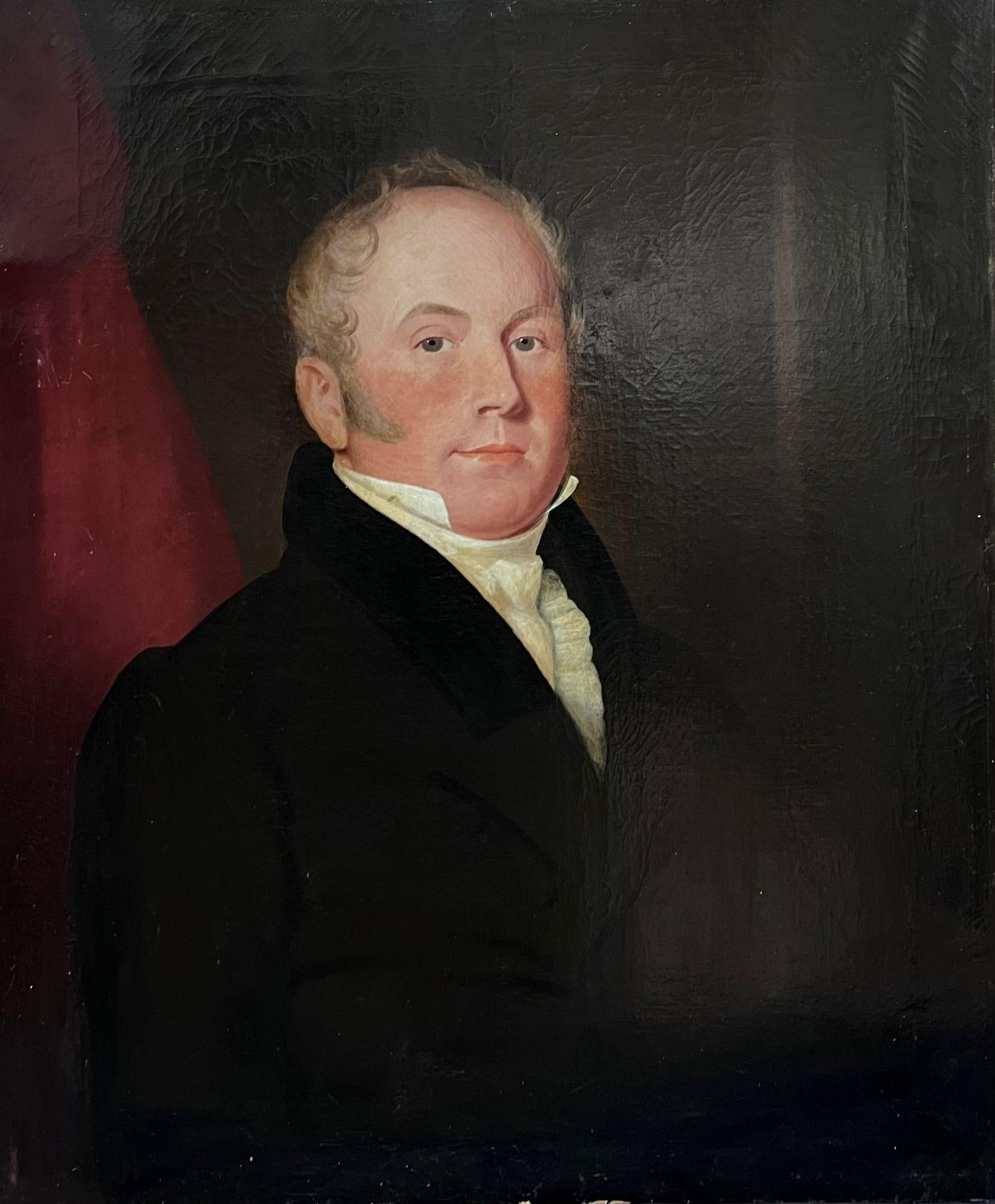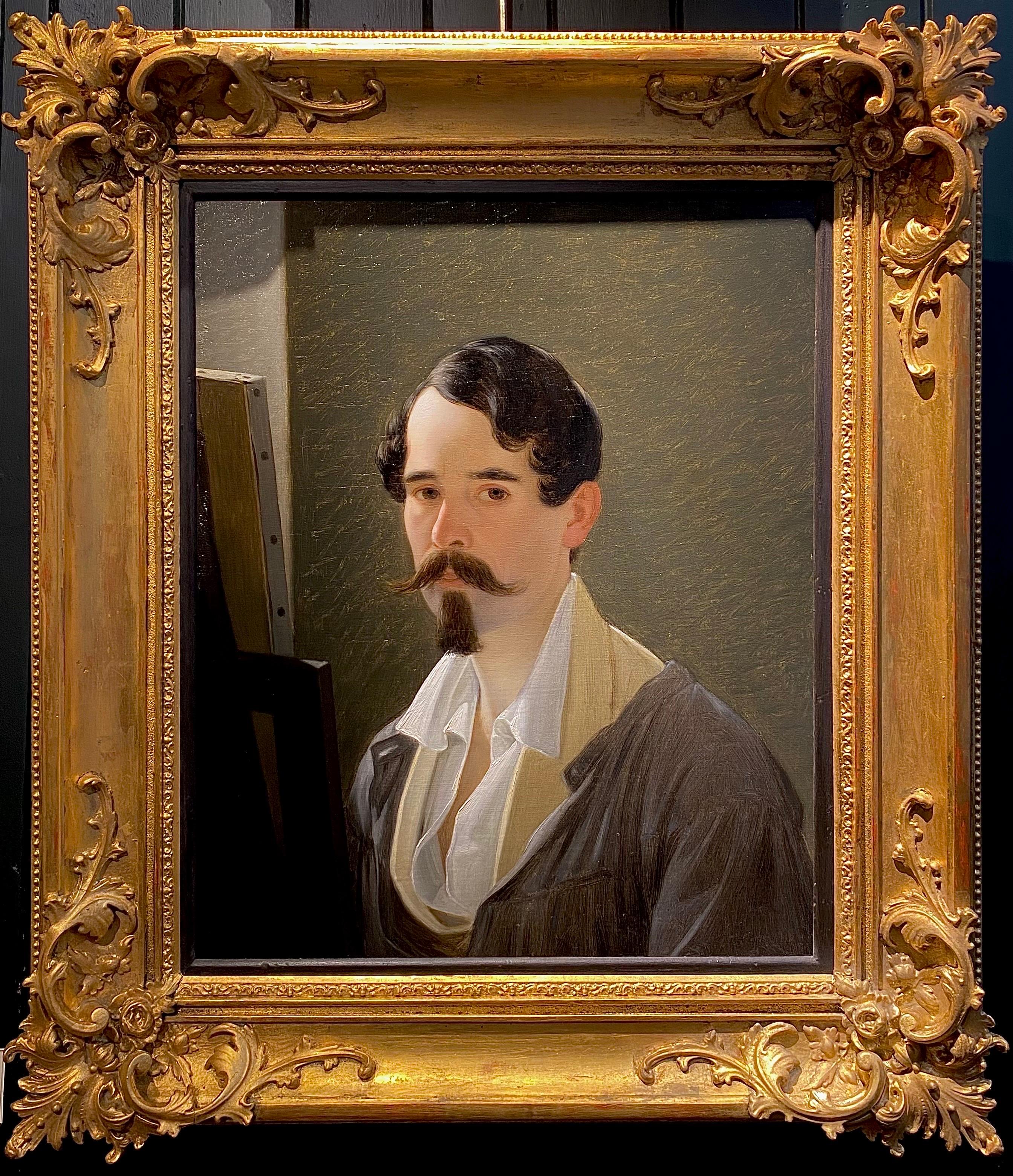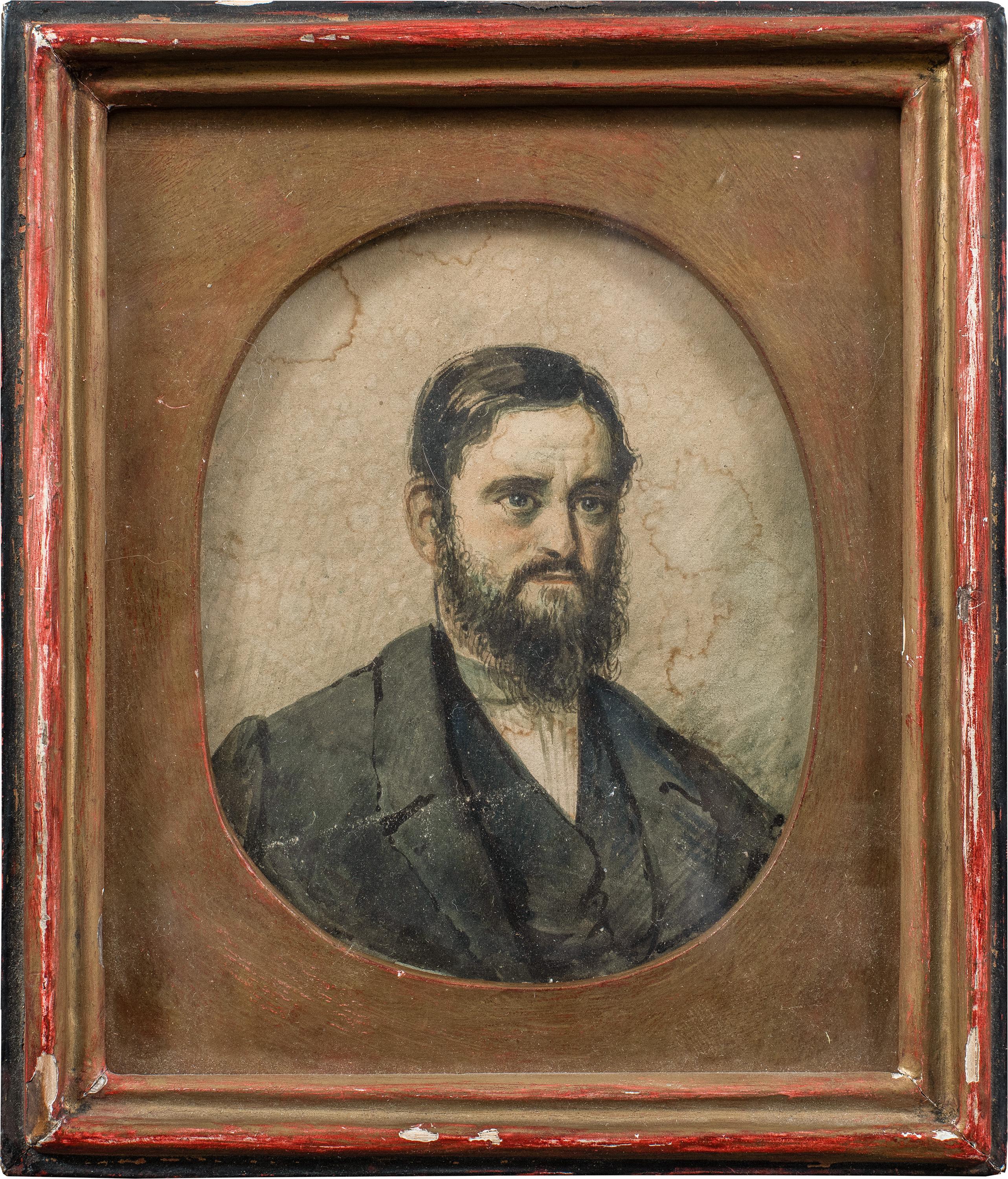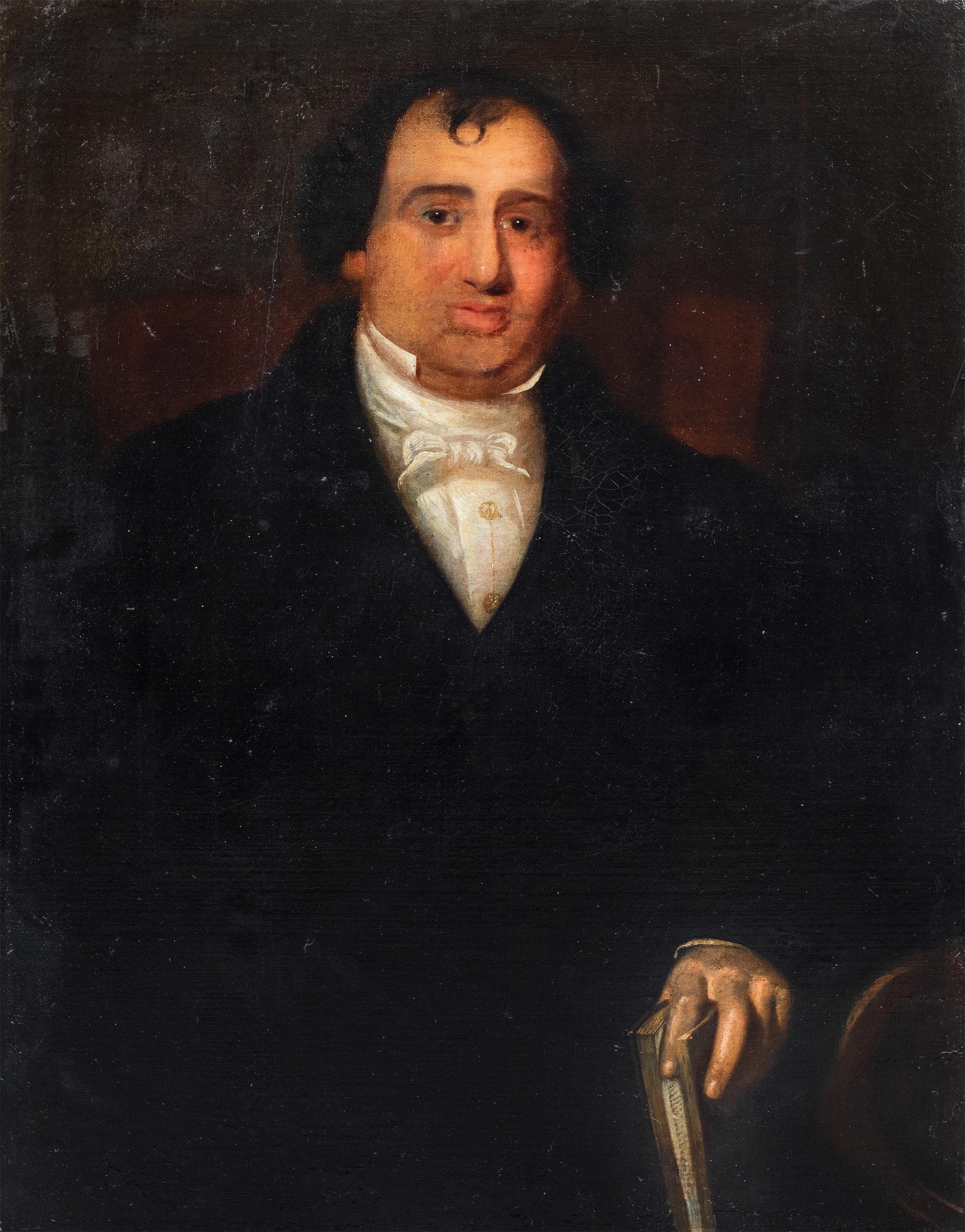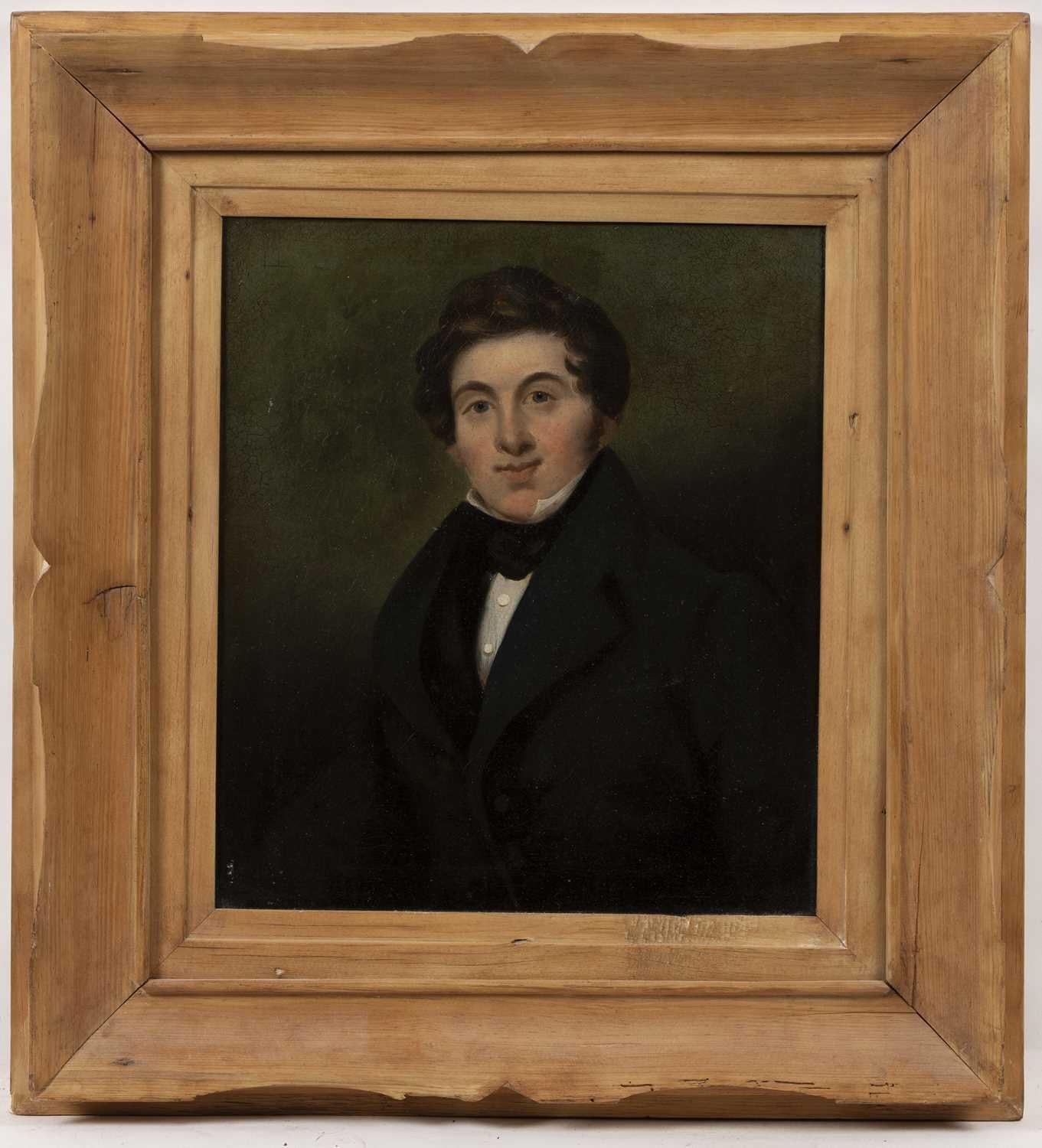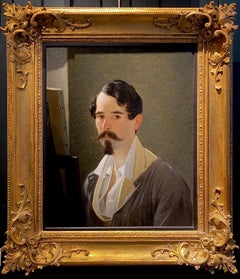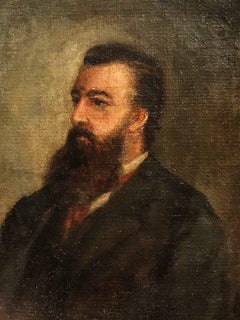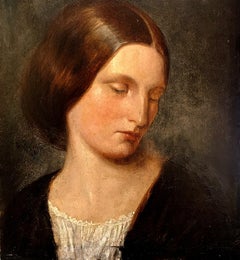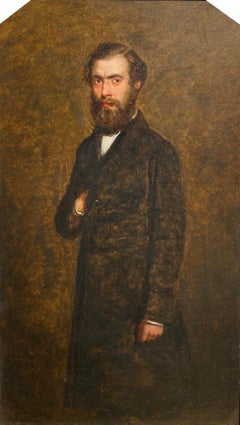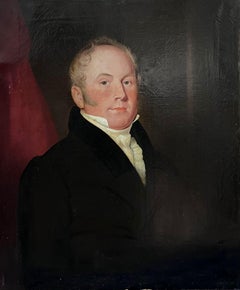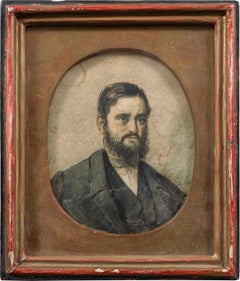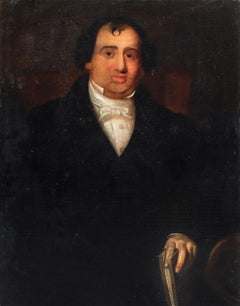Items Similar to Self Portrait, 19th Century Pre-Raphaelite Oil Painting
Want more images or videos?
Request additional images or videos from the seller
1 of 3
19th century British SchoolSelf Portrait, 19th Century Pre-Raphaelite Oil Painting
$7,374.39
£5,400
€6,350.94
CA$10,117.95
A$11,305.13
CHF 5,913.83
MX$138,637.10
NOK 75,567.59
SEK 71,658.09
DKK 47,400.51
Shipping
Retrieving quote...The 1stDibs Promise:
Authenticity Guarantee,
Money-Back Guarantee,
24-Hour Cancellation
About the Item
Oil on canvas
Image size: 9 1/4 x 7 inches (23.5 x 18 cm)
Original pierced gilt frame
This wonderful Pre-Raphaelite self-portrait contributes to the artistic tradition of representing one's self through visual means, a tradition that stretches back to the time of Ancient Egypt.
Throughout the course of art history self-portraiture has remained a tried and true practice among leading artists. Self portraits can provide a fascinating glimpse into an artist's personality, professional ambition and their social success.
This self portrait is an exercise in technique as well as personal self-examination. The artist's soft eyes and relaxed body language welcome us into the scene we are presented with. The exquisite detail that the artist has achieved with the oil paint is captivating - look at the individually crafted hairs that punctuate the man's chin. This detail adds to the atmosphere of the scene, as does the warm lighting with which the artist has been lit. The light illuminates the artist's face as he turns to the viewer while creating a shadow across his jawline. A glowing aura is also formed around his figure, allowing the artist to exude a stage-like presence.
- Creator:19th century British School
- Dimensions:Height: 9.25 in (23.5 cm)Width: 7 in (17.78 cm)
- More Editions & Sizes:1 of 1Price: $7,374
- Medium:
- Movement & Style:
- Period:
- Condition:
- Gallery Location:London, GB
- Reference Number:1stDibs: LU52410975462
About the Seller
5.0
Vetted Professional Seller
Every seller passes strict standards for authenticity and reliability
Established in 2007
1stDibs seller since 2014
82 sales on 1stDibs
Typical response time: 4 hours
- ShippingRetrieving quote...Shipping from: London, United Kingdom
- Return Policy
Authenticity Guarantee
In the unlikely event there’s an issue with an item’s authenticity, contact us within 1 year for a full refund. DetailsMoney-Back Guarantee
If your item is not as described, is damaged in transit, or does not arrive, contact us within 7 days for a full refund. Details24-Hour Cancellation
You have a 24-hour grace period in which to reconsider your purchase, with no questions asked.Vetted Professional Sellers
Our world-class sellers must adhere to strict standards for service and quality, maintaining the integrity of our listings.Price-Match Guarantee
If you find that a seller listed the same item for a lower price elsewhere, we’ll match it.Trusted Global Delivery
Our best-in-class carrier network provides specialized shipping options worldwide, including custom delivery.More From This Seller
View AllSelf Portrait. Original Oil Painting Austrian 19th Century
Located in London, GB
Joseph Weidner
Austrian 1801 - 1870
Self Portrait
Oil on canvas, signed lower left
Image size: 23 x 19 inches (58.5 x 48.5 cm)
Original gilt swept fra...
Category
1860s Vienna Secession Portrait Paintings
Materials
Oil
Portrait of Thomas Cooper Gotch, 19th Century Oil Painting
Located in London, GB
Oil on canvas on board
Image size: 7 x 5¼ inches (18 x 13.5 cm)
Framed
This portrait of Thomas Gotch is by his lifelong friend and confidante, Jane Ross, whom he met at Heatherley’s...
Category
1880s English School Portrait Paintings
Materials
Canvas, Oil
Portrait of a Mary Hardy (nee Sulman), Late 19th Century Victorian Oil
Located in London, GB
Slade School
Late 19th Century
Portrait of a Mary Hardy (nee Sulman)
Oil on panel
Image size: 8 x 7 inches
Contemporary frame
Provenance
Lady Town (Grandda...
Category
Late 19th Century Victorian Portrait Paintings
Materials
Oil, Panel
Portrait of Doctor Carter, Scottish 19th Century Signed Oil Painting
Located in London, GB
Oil on board, signed, titled and dated '1858' on verso
Image size: 10 1/2 x 18 1/2 inches (26.5 x 47 cm)
Gilt frame
This is a wonderful portrait that was painted by John Burr at a t...
Category
Late 19th Century Portrait Paintings
Materials
Oil, Board
Portrait of William Herbert, 3rd Earl of Pembroke, Early 17th Century Portrait
Located in London, GB
English School, (circa 1600)
Portrait of William Herbert, 3rd Earl of Pembroke
Oil on panel, oval
Image size: 29¼ x 23⅞ inches
Painted wooden frame
Provenance:
176, Collection of Francis Greville, 1st Earl of Warwick.
The Trustees of the Lord Brooks’ Settlement, (removed from Warwick Castle).
Sotheby’s, London, 22nd March 1968, lot 81.
Painted onto wooden panel, this portrait shows a dark haired gentleman in profile sporting an open white shirt. On top of this garments is a richly detailed black cloak, decorated with gold thread and lined with a sumptuous crimson lining. With the red silk inside it’s all very expensive and would fall under sumptuary laws – so this is a nobleman of high degree.
It’s melancholic air conforms to the contemporary popularity of this very human condition, evident in fashionable poetry and music of the period. In comparison to our own modern prejudices, melancholy was associated with creativity in this period.
This portrait appeared in the earliest described list of pictures of Warwick castle dating to 1762. Compiled by collector and antiquary Sir William Musgrave ‘taken from the information of Lord & Lady Warwick’ (Add. MSS, 5726 fol. 3) is described;
‘8. Earl of Essex – an original by Zuccharo – seen in profile with black hair. Holding a black robe across his breast with his right hand.’
As tempting as it is to imagine that this is a portrait of Robert Devereux, the 2nd Earl Essex, we might take this with a pinch of salt. Its identification with this romantic and fatal Elizabethan might well have been an attempt to add romance to Warwick Castle’s walls. It doesn’t correspond all that well with Essex’s portraits around 1600 after his return from Cadiz. Notably, this picture was presumably hung not too far away from the castle’s two portraits of Queen Elizabeth I. The first, and undoubtedly the best, being the exquisite coronation portrait that was sold by Lord Brooke in the late 1970s and now hangs in the National Portrait Gallery. The second, described as being ‘a copy from the original at Ld Hydes’, has yet to resurface.
The portrait eventually ended up being hung in the State Bedroom of Warwick Castle.
Archival documents present one other interesting candidate. The Greville family’s earliest inventory of paintings, made in 1630 at their home Brooke House in Holborn, London, describes five portraits of identified figures. All five belonged to the courtier, politician and poet Sir Fulke Greville (1554-1628), 1st Baron Brooke, and were hung in the ‘Gallerie’ of Brooke House behind yellow curtains. One of them was described as being of ‘Lord of Pembrooke’, which is likely to have been William Herbert (1580-1630), 3rd Earl of Pembroke. William was the eldest son of Greville’s best friend’s sister Mary Sidney, and was brought up in the particularly literary and poetically orientated household which his mother had supported. Notably, the 3rd Earl was one of the figures that Shakespeare’s first folio was dedicated to in 1623.
The melancholic air to the portrait corresponds to William’s own pretensions as a learned and poetic figure. The richness of the robe in the painting, sporting golden thread and a spotted black fabric, is indicative of wealth beyond that of a simple poet or actor. The portrait’s dating to around the year 1600 might have coincided with William’s father death and his own rise to the Pembroke Earldom. This period of his life too was imbued with personal sadness, as an illicit affair with a Mary Fitton had resulted in a pregnancy and eventual banishment by Elizabeth I to Wilton after a short spell in Fleet Prison. His illegitimate son died shortly after being born. Despite being a close follower of the Earl of Essex, William had side-stepped supporting Devereux in the fatal uprising against the Queen and eventually regained favour at the court of the next monarch James I.
His linen shirt is edged with a delicate border of lace and his black cloak is lined on the inside with sumptuous scarlet and richly decorated on the outside with gold braid and a pattern of embroidered black spots.
Despite the richness of his clothes, William Herbert has been presented in a dishevelled state of semi-undress, his shirt unlaced far down his chest with the ties lying limply over his hand, indicating that he is in a state of distracted detachment. It has been suggested that the fashion for melancholy was rooted in an increase in self-consciousness and introspective reflection during the late 16th and early 17th centuries.
In contemporary literature melancholy was said to be caused by a plenitude of the melancholy humor, one of the four vital humors, which were thought to regulate the functions of the body. An abundance of the melancholia humor was associated with a heightened creativity and intellectual ability and hence melancholy was linked to the notion of genius, as reflected in the work of the Oxford scholar Robert Burton, who in his work ‘The Anatomy of Melancholy’, described the Malcontent as ‘of all others [the]… most witty, [who] causeth many times divine ravishment, and a kind of enthusiamus… which stirreth them up to be excellent Philosophers, Poets and Prophets.’ (R. Burton, The Anatomy of Melancholy, London, 1621 in R. Strong, ‘Elizabethan Malady: Melancholy in Elizabethan and Jacobean Portraits’, Apollo, LXXIX, 1964).
Melancholy was viewed as a highly fashionable affliction under Elizabeth I, and her successor James I, and a dejected demeanour was adopted by wealthy young men, often presenting themselves as scholars or despondent lovers, as reflected in the portraiture and literature from this period. Although the sitter in this portrait is, as yet, unidentified, it seems probable that he was a nobleman with literary or artistic ambitions, following in the same vain as such famous figures as the aristocratic poet and dramatist, Edward de Vere...
Category
Early 17th Century Old Masters Portrait Paintings
Materials
Oil, Wood Panel
A Young Lady
By William Edward Frost
Located in London, GB
Oil on board
Image size: 5 1/2 x 4 1/2 inches (14 x 11.5 cm)
Original 19th century oval mount and frame
Provenance;
With Richard Naworth, Blackburn
William Edward Frost (September 1810 – 4 June 1877) was an English painter of the Victorian era. Virtually alone among English artists in the middle Victorian period, he devoted his practice to the portrayal of the female nude. Specialising in portraiture from about 1830, Frost painted more than 300 portraits during a 15-year period, and showed some as his first exhibits from 1836.
William Edward Frost was born in Wandsworth, then in Surrey, in September 1810. He showed artistic talent from an early age, and was encouraged in this by his father: first by his arranging drawing lessons with a Miss Evatt, a neighbouring amateur, and then, in 1825, by his introducing him to William Etty, who became his mentor. On Etty’s recommendation, he entered Henry Sass’s School for Drawing and Painting at 6 Charlotte Street, in 1826, and spent three years there, while also studying at the British Museum each winter.
Frost was educated in the schools of the Royal Academy, beginning in 1829; he established a reputation as a portrait painter before branching into historical and mythological subjects, including the subgenre of fairy painting...
Category
19th Century English School Portrait Paintings
Materials
Oil, Board
You May Also Like
A young poet or artist, French Romantic period portrait of a sensitive figure
Located in Norwich, GB
You will find this young man good company! It is a pleasure to study his thoughtful, sensitive face. He has a benevolent and real presence. To my mind, he certainly has an artistic nature - he looks like a thinker, poet and/or musician.
Dating from what the French call the Romantic Period, the early 1800s, our painting is monogrammed AG and may be attributed to Auguste Glaize.
Born in Montpellier, Auguste Glaize studied under the painters Achille Devéria and Eugène Devéria.
He came to be one of the great French Romantic painters of the early 19th century, marking his career with important history paintings and cycles of monumental religious...
Category
1830s Romantic Portrait Paintings
Materials
Oil, Wood Panel
19th Century English Victorian Oil Painting on Canvas Portrait of a Gentleman
Located in Cirencester, Gloucestershire
Portrait of an English Gentleman
English artist, 19th century
oil on canvas, unframed
Canvas: 30.5 x 25 inches
Provenance: Private collection, England
Condition: overall very good an...
Category
19th Century Victorian Portrait Paintings
Materials
Oil, Canvas
Realist European painter - 19th century figure painting - Portrait of a gentlema
Located in Varmo, IT
European Painter (19th century) - Portrait of a Gentleman.
13.5 x 10 cm without frame, 18.5 x 15.5 cm with frame.
Watercolor on paper, in original 19th century frame (not signed).
...
Category
19th Century Realist Figurative Paintings
Materials
Paper, Watercolor
Realist Italian painter - 19th century figure painting - Male Portrait
Located in Varmo, IT
Italian painter (19th century) - Portrait of a gentleman with a book.
92 x 71 cm.
Antique oil painting on canvas, without frame (not signed).
Condition report: Lined canvas. Good ...
Category
Late 19th Century Realist Figurative Paintings
Materials
Canvas, Oil
$1,429 Sale Price
20% Off
Portrait of a Young Gentleman English circa 1860's Period Framed Oil Painting
Located in Cirencester, Gloucestershire
19th century English school
Portrait of a young gentleman (a scholar?) in dress suit
oil on canvas, framed
framed: 21 x 19.5 inches
canvas: 14 x 1...
Category
Mid-19th Century Victorian Portrait Paintings
Materials
Canvas, Oil
Late 19th Century Oil - Portrait of a Gentleman
Located in Corsham, GB
This striking portrait emerges from deep shadows, with warm golden tones illuminating the subject's face against a dark background. The composition is tightly focused on the profile ...
Category
Late 19th Century Portrait Paintings
Materials
Oil
More Ways To Browse
Portrait Canvas Oil Antique Man
Antique Exercise
Portrait Neck
Lord Portrait
Belgium Oil Painting Portrait
Unknown 19th Century Oil Portrait
Portrait Painting Boy Framed
18th Century British Paintings
Prince Charles
Antique Portrait Light
Portrait Oval Frame
18th Century French Portraits
19th Century Portrait Of A Lady
Oval Portrait Paintings
Oil Portrait Sisters
Painting Of Two Girls Portrait
Portrait Framed 17th Century
King Charles Painting
